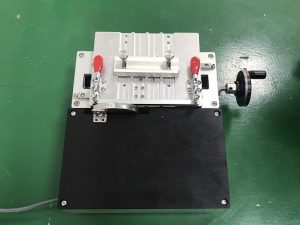Tapping Does not Reach The Required Depth – How to Recognize and Control Depth When Tapping
Tapping is commonly used in a wide range of industries, including manufacturing, automotive, aerospace, and construction, wherever threaded connections are needed. It is a fundamental process in the production of components and assemblies, contributing to the functionality, reliability, and integrity of various mechanical systems.
What is Tapping?
Tapping is a fundamental process in manufacturing, essential for creating threads in holes to accommodate screws, bolts, and other fasteners. The process involves rotating a cutting tool known as a tap into a pre-drilled hole to carve out the threads.
How to check and recognize tap depth is not reached
Recognizing when tapping does not reach the required depth is crucial for ensuring the quality and integrity of threaded connections in mechanical components. Here are some methods to check and recognize inadequate thread depth
Visual Inspection
- Comparison with Standards: Use thread gauges or reference samples with known thread depths to visually compare the tapped hole. If the threads appear shallower than the standard or reference, it indicates a potential depth issue. Surface
- Examination: Inspect the surface of the tapped hole for signs of incomplete threading, such as uneven or interrupted threads. Inadequate depth often results in incomplete or irregular thread patterns.
Physical Measurement
- Depth Gauge: Utilize a depth gauge to measure the depth of the tapped hole accurately. Compare the measured depth with the required depth specified in the design or manufacturing instructions.
- Thread Gauge: Use a thread gauge to check the actual pitch diameter of the threads. If the pitch diameter falls outside the acceptable range due to insufficient depth, it indicates a depth problem.
- Functional Testing: Trial Assembly: Attempt to assemble the threaded component with the mating part. If the fastener does not engage fully or if there is excessive play, it suggests that the threads may not have reached the required depth.
- Torque Testing: Apply the specified torque to the assembled fastener and monitor for any signs of stripping or thread damage. Inadequate thread depth can compromise the fastener’s strength and lead to premature failure under load.

Challenges in Depth Control
Material Variability
- Hardness Discrepancies: Different materials exhibit varying degrees of hardness, which can influence how effectively the tap cuts into the material. Harder materials require more force and may cause increased tool wear, affecting the ability to achieve consistent thread depths.
- Material Composition: Variations in material composition, such as alloy content or impurities, can impact machinability. Inhomogeneous materials may yield uneven thread depths, especially if the tap encounters regions of differing hardness or grain structure.
Tool Wear
- Friction and Heat Generation: As the tap rotates and cuts into the material, friction and heat are generated at the cutting edges. This friction accelerates tool wear, leading to dulling or chipping of the tap. Worn-out taps are less effective at cutting threads to the required depth, resulting in shallower or uneven threads.
- Edge Deterioration: Continuous contact with the workpiece gradually wears down the cutting edges of the tap, reducing their sharpness and cutting ability. Edge deterioration is exacerbated when machining abrasive materials or performing high-volume tapping operations without adequate tool maintenance.
Machine Precision
- Alignment and Rigidity: Tapping operations rely on the precise alignment and rigidity of machining equipment, including the drill press, tapping machine, or CNC mill. Any misalignment or instability in the machine setup can lead to deviations in thread depth. Factors such as spindle runout, tool deflection, or improper fixture mounting can compromise depth control.
- Feed Rate and Speed: Incorrect feed rates and spindle speeds can adversely affect the tapping process. Excessive speeds may cause the tap to advance too quickly, resulting in shallow threads, while insufficient speeds can lead to chip buildup and tap binding. Similarly, improper feed rates can produce inadequate chip evacuation, hindering the tap’s penetration depth.
Chip Evacuation
- Chip Jamming: Chips generated during tapping must be efficiently removed from the hole to prevent chip jamming and ensure uninterrupted threading. Insufficient chip evacuation can impede the tap’s progress, causing it to dwell in the hole or retract prematurely before reaching the desired depth. Chip entanglement may also damage the tap or create irregularities in thread formation.
Process Monitoring and Control
- Real-time Feedback: Limited visibility into the tapping process makes it challenging to monitor depth control in real-time. Without feedback mechanisms or in-process monitoring, operators may be unaware of depth discrepancies until after the machining operation is complete, necessitating post-tapping inspections and potential rework.
- Consistency and Reproducibility: Achieving consistent thread depths across multiple workpieces is essential for maintaining product quality and dimensional accuracy. Variability in machining conditions, operator technique, or tool condition can compromise the reproducibility of thread depths, leading to inconsistencies in finished components.
Tapping may be a staple of mechanical machining, but achieving the required depth is anything but straightforward. From material variability to tool wear, numerous factors conspire to undermine the precision of tapping operations. However, by implementing strategic measures aimed at enhancing tool performance, optimizing machining processes, and integrating cutting-edge technologies, manufacturers can surmount the depth dilemma and elevate tapping to new heights of accuracy and reliability in precision mechanical machining.

















